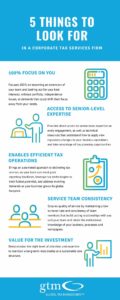A Definitive Answer to State Tax Reform: “It Depends”
By Chau H. Tran and John Damin
As anyone who has ever asked a state tax question knows, the response, more likely than not, begins with “it depends.” This sometimes frustrating answer has even become a bit of a joke among state tax professionals, given how common it is used to precede a discussion that is often filled with questions instead of answers. state tax reform
State issues surrounding the 2017 Tax Cuts and Jobs Act (“Tax Reform”) is no exception! Still very much in its infancy, “it depends” has never been used so often by state tax professionals. While many states generally start their computation with federal taxable income as reported on the Federal Form 1120, line 28 or line 30, state statutes do not actually refer to the federal form. Rather, states use line 28 or line 30 as a starting point as a matter of convenience. Undeniably, to properly understand the impact of tax reform, the laws of each of the 45 states with a corporate income tax need to be analyzed (don’t forget cities too!). Although there are certainly general rules, there are a lot more exceptions to be considered.
In determining the state tax treatment of the Tax Reform provisions, one must first examine each state’s conformity to the Internal Revenue Code (“IRC”). Specifically, the IRC conformity method will dictate whether the Tax Reform provisions are 1) automatically incorporated, thus requiring the state to decouple/modify certain provisions if it wishes, or 2) not incorporated, requiring legislative action to incorporate some or all the provisions.
Below is a list of ways that states may conform to the IRC, along with the implications in adoption of the Tax Reform provisions:
|
IRC Conformity Method |
Description |
| Rolling Conformity |
State adoption of the IRC conforms to the federal amendments automatically |
| Federal Taxable Income as Starting Point |
IRC conformity not specifically addressed, but State Taxable Income starts with Federal Taxable Income |
| Fixed Date Conformity |
Conformity to the IRC is set as of a specific date (e.g., January 1, 2017) |
| Select Conformity |
State only adopts select provisions of the IRC |
For the Rolling Conformity States and the states that use Federal Taxable Income as the starting point, most of the Tax Reform provisions should automatically be adopted. Most, not all. Why? Exceptions, of course. Because even with conformity to the current IRC, not all states automatically adopt special deductions, such as those under IRC §951A and §250 (GILTI as charged). In addition, after conformity with the IRC, states often modify or decouple from specific IRC provisions that have a negative revenue impact.
As states slowly begin to review and understand provisions of Tax Reform, upcoming legislative sessions will certainly reflect the impact. Classic historical examples of states decoupling from federal provisions include the addback of state income tax expenses, bonus depreciation, DRD, IRC § 199, etc. Because most states have decoupled in prior years from bonus depreciation under IRC § 168(k), legislative action is not necessarily required to address the full expensing provisions under the Tax Reform. For example, the Kentucky and Minnesota Department of Revenues have already issued statements that they will not conform to the full cost recovery provisions under Tax Reform. In addition, Pennsylvania is taking a particularly aggressive stance. Through administrative guidance (Corporate Tax Bulletin 2017-02), the Pennsylvania Department of Revenue takes the position that the entire amount deducted under the Tax Reform cost recovery provisions must be added back in determining Pennsylvania taxable income. Further, no deduction on such assets will be permitted until the asset is sold or otherwise disposed of. It is feasible that, under such rules, a taxpayer will not be permitted to take a deduction in Pennsylvania until years after the asset was put into service. Amid outcry from the business community, legislation has been proposed to address this unfavorable treatment.
On the flip side, states will unlikely decouple from unfavorable provisions such as the interest expense limitation. The impact of this provision, however, may be limited to taxpayers that have external debt or debt to a foreign related member since many states already disallow intercompany interest charges under certain scenarios.
Regarding the Fixed Conformity States, adoption of Tax Reform depends on each individual state’s IRC conformity date. Those with a conformity date on or before December 21, 2017 will not automatically adopt the Tax Reform provisions. If such states wish to adopt a specific Tax Reform provision, they would need to generally amend their laws through the legislative process. Those states with a conformity date of December 22, 2017 or later, adopts Tax Reform in its entirety (requiring modification or decoupling from those provisions they do not wish to adopt).
An interesting trend is beginning to form in the Fixed Conformity States. Certain state bills, some of which have been passed into law, are changing the IRC conformity date to December 21, 2017. Such a date would not result in the Tax Reform provisions being adopted. However, specifically with regard to IRC § 965 (pertaining to Subpart F income), the conformity date is December 31, 2017 (see for example, Idaho). This is important because of the state revenue impact. Under the revised IRC § 965, corporations must recognize in taxable income a one-time repatriation of previously untaxed foreign earnings. By adopting a December 31, 2017 conformity date only as it relates to IRC § 965, such amounts would be included in State Taxable Income. Further, to the extent a dividends received deduction (DRD) would be permitted under IRC § 965, states could disallow the DRD via a state modification.
As state tax professionals, we hope that a much clearer picture on what the states will do will evolve prior to the compliance seasons that will be impacted. Nevertheless, with many of us facing year-end closes, at present we unfortunately must use the best information available which, at present, is limited.
Being early in the calendar year, many months exist until the extended state tax return due dates for calendar year taxpayers. This gives the legislatures and administrative agencies time to craft more specific laws and guidance. What we do have at present is an analysis of history. Based on this history, we can make educated guesses on where states will land with many of the questions that currently surround Tax Reform.
We hope this post was helpful as you assess the impact of tax reform on your business. GTM will be publishing regular posts highlighting key features and developments of tax reform. Visit our tax reform page for the latest U. S. tax reform updates.



